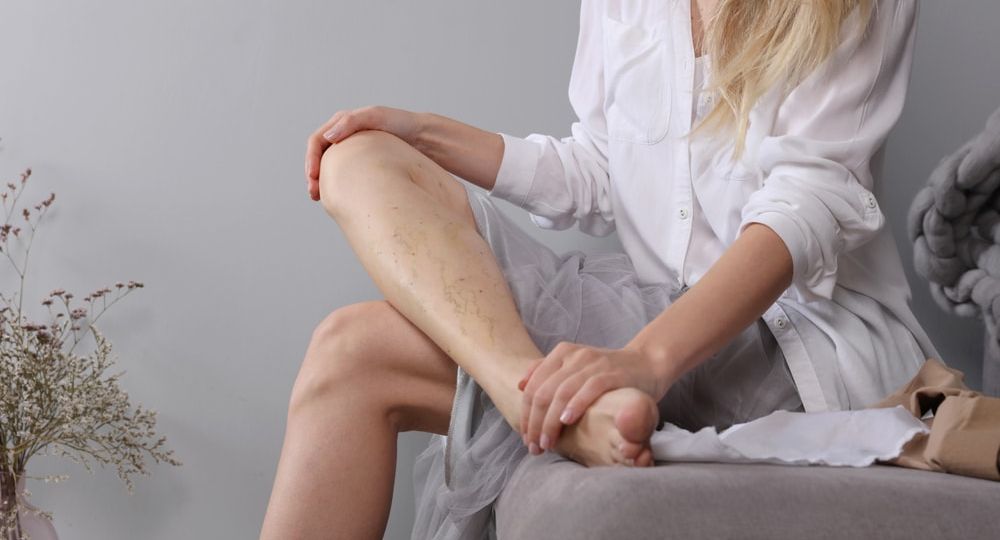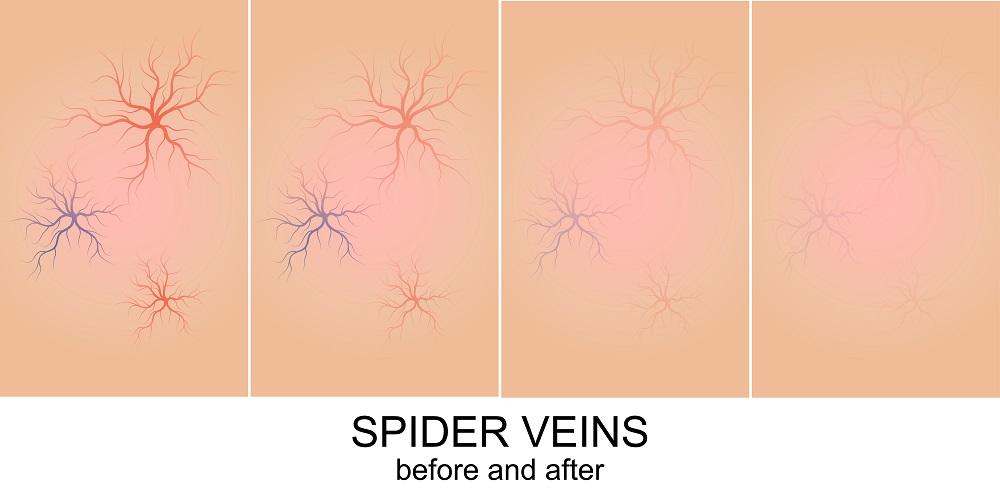
What are spider veins exactly?
Spider veins on the ankles and feet are small, visible veins that appear close to the surface of the skin. They are also known as telangiectasias and are usually blue, red, or purple in color. Spider veins occur when the valves within the veins stop functioning correctly, causing blood to pool in the veins and creating a visible web-like pattern on the skin. They are commonly seen in women, particularly during pregnancy or with aging, and can be caused by genetics, prolonged standing, obesity, and hormonal changes. Spider veins are generally harmless but can cause discomfort or aching in some people.
Are Spider Veins More Common in Men or Women?
Yes, spider veins are more common in women than in men. According to the American Society of Plastic Surgeons, up to 55% of women may develop spider veins at some point in their lives, while only about 45% of men are affected. This may be due to hormonal changes that occur during pregnancy, menopause, or with the use of certain birth control methods. Additionally, women tend to have a higher proportion of body fat than men, which can put additional pressure on the veins and increase the risk of developing spider veins. Other risk factors for spider veins include genetics, aging, obesity, and a history of blood clots. While spider veins are more common in women, men can still develop them and may benefit from treatment options such as sclerotherapy or laser therapy.
Symptoms of Spider Veins on Ankles and Feet: What You Need To Know
Spider veins are usually harmless and do not cause any symptoms. However, some people may experience discomfort or pain in the affected area. Spider veins are small, visible blood vessels that appear close to the surface of the skin. They often look like a spider web or tree branch, and can be red, blue, or purple in color. They can occur anywhere on the body, but are most commonly seen on the ankles, feet, and legs.
Spider veins are caused by increased pressure in the blood vessels, which can be caused by a variety of factors, including genetics, hormonal changes, obesity, and prolonged standing. They can also be a symptom of a more serious condition, such as chronic venous insufficiency. This typically happens when the valves within the veins do not perform or function properly. They in turn cause blood to pool in the veins and ultimately leading to the development of varicose veins and spider veins.
If you are experiencing pain, discomfort, or any other symptoms in the affected area, it is important to consult with a healthcare professional to determine the underlying cause and appropriate treatment options.
How Can You Prevent Spider Veins?
Preventing spider veins on the feet and ankles can be achieved by following some simple lifestyle changes:
- First and foremost, it is important to maintain a healthy weight and exercise regularly to improve circulation.
- If you need to stand for long periods of time, try taking breaks and walking around periodically to avoid putting excessive pressure on your feet and ankles.
- Additionally, wearing compression stockings can help improve blood flow and reduce the risk of developing spider veins.
It is also important to treat varicose veins promptly, as these are closely related to the symptoms of spider veins and can increase your risk of developing them. If you have a family history of spider veins or varicose veins, you may be at a higher risk of developing them yourself. In this case, it is especially important to take steps to prevent their development, such as regular exercise and wearing compression stockings.
Treatment Options for Spider Veins
There are several treatment options available for spider veins, which are small, visible blood vessels that appear close to the skin’s surface. These veins are usually harmless, but if left untreated, they can lead to complications such as blood clots or ulcers. Treatment options for spider veins include:
- Sclerotherapy: This involves injecting a solution into the affected vein, causing it to collapse and eventually fade from view.
- Laser therapy: This involves using a laser to target the affected vein, causing it to fade from view.
- Endovenous laser therapy: This is a minimally invasive procedure that involves using a laser to close the affected vein from the inside.
- Radiofrequency ablation: This is a minimally invasive procedure that uses radiofrequency energy to close the affected vein.
- Compression stockings: Wearing compression stockings can help improve blood flow and reduce the appearance of spider veins.
- Lifestyle changes: Making lifestyle changes such as exercising regularly, maintaining a healthy weight, and avoiding prolonged periods of standing or sitting can help prevent the development of spider veins.

It is important to note that while these treatments can help reduce the appearance of spider veins, they do not guarantee that new ones will not develop in the future. Spider and reticular veins are often a cosmetic concern, but those with symptomatic varicose veins or corona phlebectatica should see a phlebologist. Our boca raton vein specialists at Certified Foot and Ankle Specialists offer comprehensive evaluation, including a duplex venous ultrasound to assess for blood clots, blockages, and venous reflux.
We urge you to make an appointment with our vein care expert phlebologist so they can determine the best course of treatment for your individual needs, as well as to identify any underlying conditions that may be contributing to the development of spider veins.
